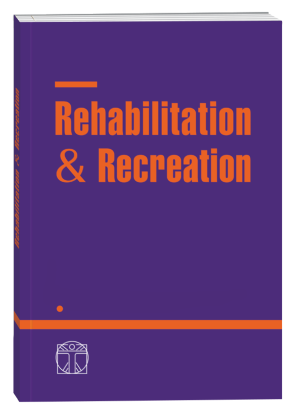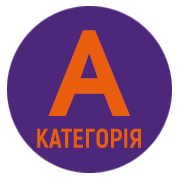PECULIARITIES OF PHYSICAL DEVELOPMENT OF U CHILDREN WITH VISION DEPRIVATION
DOI:
https://doi.org/10.32782/2522-1795.2023.14.22Keywords:
visual deprivation, children, physical development, physical fitness.Abstract
The article examines the data of modern scientific research devoted to the analysis and comparison of indicators of physical development of children with visual impairment, which state the fact that children of primary and secondary school age with visual impairment have a significantly lower level of physical development and physical fitness than their peers who have the given no pathology was detected. It is scientifically proven that with age, indicators of physical development in children with visual deprivation increase, but more slowly compared to their peers who do not have the same pathology. It is possible to assume that the age-related dynamics of physical development in children with visual impairment is physiological, as in the norm, but the level of physical development is much lower. The purpose of the study is to analyze indicators of physical development in children with visual impairment. Research methods: theoretical analysis of data from special literature on the selected research topic, which involved the use of a number of the following methods: reconstruction, aspectual and conceptual analyses. Material. Deprivation of sensory systems as a result of visual impairment in children of various ages changes their life activities and reduces adaptive capabilities. Children with visual impairment are characterized by the presence of such dysfunctions as: impairment of spatial images, sensory perception of the world, self-control and self-regulation. body as a whole. Such dysfunctions are accompanied by the development of concomitant diseases, the most common of which is minimal brain dysfunction. Periodically, children with this pathology may have various manifestations of behavioral disorders, which, according to scientific research, negatively affect their motor activity. The results. It is scientifically proven that with age, indicators of physical development in children with visual deprivation increase, but more slowly compared to their peers who do not have the same pathology. The age-related dynamics of physical development in children with visual impairment is physiological, as in the norm, but the level of physical development is much lower. During almost the entire school age, children with vision deviation lag behind their peers who do not have this pathology in height and body weight. Conclusions. There is an assumption that indicators of physical development and physical fitness in children with impaired visual function are significantly different from those of peers with normal vision, but there is not enough scientific research to substantiate this assumption. Identifying the features of physical development with and without visual impairment is necessary, as the content of motor impairment correction programs is determined on the basis of the data obtained.
References
Винник Д.П. Адаптивное физическое воспитание и спорт. Киев: Олимпийская литература. 2010. 608 с.
Бутов Р.С. Фізична реабілітація дітей шкільного віку з вадами зору в умовах спеціалізованих навчальних закладів: автореферат. Київ : Національний університет фізичного виховання і спорту України, 2016. 23 с.
Буховець Б.О., Долинський Б.Т., Борщенко В.В., Погорелова О.О. Особливості змін мозкового кровообігу дітей середнього шкільного віку з функціональними порушеннями зору за впливом методу Фельделькрайз. Інноваційна педагогіка. 2021.32. 80–85.
Войтко В.В. Корекційно-розвиткова робота з дітьми із затримкою психічного розвитку в умовах інклюзії: дидактичне забезпечення: методичний посібник. Кропивницький : КЗ «КОІППО імені Василя Сухомлинського», 2017. 98 с.
Григус І.М., Крук І.М. Сенсорна інтеграція дітей з раннім аутизмом. Реабілітаційні та фізкультурно-рекреаційні аспекти розвитку людини. Rehabilitation & recreation. 2022. 11. 102–110. https://doi.org/10.32782/2522-1795. 2022.11.12
Демчук С. Характеристика просторової організації тіла молодших школярів із депривацією зору в процесі фізичного виховання. Фізичне виховання, спорт і культура здоров’я у сучасному суспільстві: збірник наукових праць. 2016. (33). 76–80.
Дегтяренко Т.М., Вавіна Л.С. Корекційно-реабілітаційна робота в спеціальних дошкільних закладах для дітей з особливими потребами. Суми : ВТД «Університетська книга», 2008. 302 с.
Кашуба В., Савлюк С. Біологічні передумови розробки концепції формування просторової організації тіла дітей 6–10 років із депривацією зору. Journal of Education, Health and Sport. 2017. 7 (7). 1095–1112.
Кравченко І., Гладов В. Особливості фізичного виховання дітей із порушеннями зору. Педагогічні науки: теорія, історія, інноваційні технології. 2017. 1 (65). 250–259.
Савлюк С. Передумови розробки концепції з формування просторової організації тіла дітей із депривацією сенсорних систем у процесі фізичного виховання. Вісник Прикарпатського університету. 2017. 26. 269–277.
Савлюк С.П. Аналіз програм з корекції просторової організації тіла молодших школярів із депривацією зору. 2017. 3 (84). 421–424. 12. Yekta Ab., Hooshmand Elh., Saatchi M., Ostadimoghaddam H.,Asharlous Am, Taheri Az. Global Prevalence and Causes of Visual Impairment and Blindness in Children: A Systematic Review and Meta-Analysis. J Curr Ophthalmol. 2022; 34(1). 1–15. doi: 10.4103/joco.joco_ 135_21
Abdolalizadeh P., Chaibakhsh S., Falavarjani KG. Global burden of paediatric vision impairment: A trend analysis from 1990 to 2017. Eye (Lond). 2021, 35. 2136–2145.
Grygus I, Nagorna O. Nogas A., Zukow W. Anthropological providing educational services to children with special educational needs. Journal of Human Sport and Exercise. 2019. 14(4proc), 852–866. https://doi.org/10.14198/ jhse.2019.14.Proc4.48
Rudnicka A.R., Kapetanakis V.V., Wathern A.K., Logan N.S., Whincup P.H. Global variations and time trends in the prevalence of childhood myopia, a systematic review and quantitative meta-analysis: Implications for aetiology and early prevention. Br J Ophthalmol. 2016.100. 882-900.
Savluyk S. Conceptual basis of the concept of spatial organization of body of children 6–10 years with sensor systems deprivation in the process of physical education. Фізичне виховання, спорт і культура здоров’я у сучасному суспільстві. 2017. 3 (39). 180–185.
Savliuk S., Kashuba V., Vypasniak I., Yavorskyy A., Kindrat P., Grygus I., Vakoliuk A., Panchuk I., Hagner-Derengowska M. Differentiated approach for improving the physical condition of children with visual impairment during physical education. Journal of Physical Education and Sport. 2020. 20 (Supplement issue 2), 958–965. DOI:10.7752/jpes.2020.s2136
Hoeg B., Moldow B., Ellervik C., Klemp K., Erngaard D., La Cour M. Danish Rural Eye Study: The association of preschool vision screening with the prevalence of amblyopia. Acta Ophthalmol. 2015. 93. 322–329.
Downloads
Published
How to Cite
Issue
Section
License

This work is licensed under a Creative Commons Attribution-NonCommercial-NoDerivatives 4.0 International License.












